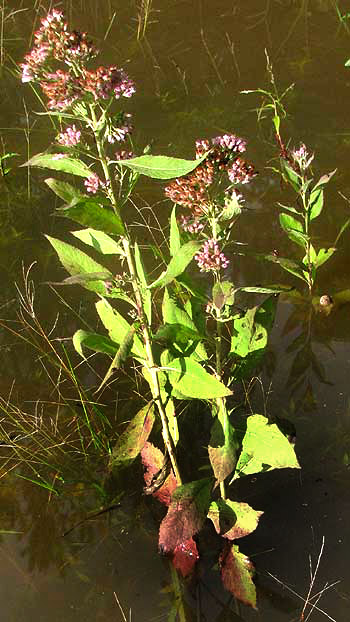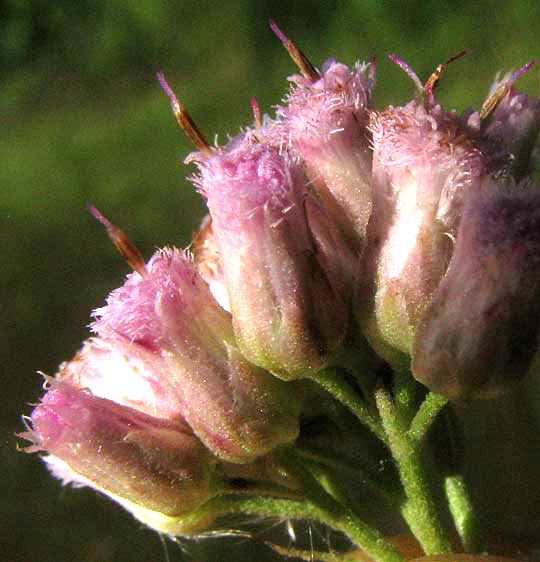Excerpts from Jim Conrad's
Naturalist Newsletter
from the July 22, 2012 Newsletter issued from the woods of the Loess Hill Region a few miles east of Natchez, Mississippi, USA
CAMPHORWEED
During recent heavy rains certain low-lying areas here got flooded. You can see an interesting "weed" emerging from the water of a low-lying, abandoned field below:

With flower heads composed of smaller clusters of tiny, packed-together flowers, at a distance you can see that this is a member of the Composite or Aster Family. A close-up of several flower heads is shown below:

Each of those urn-shaped items contains several "real" flowers. The heads of most species in the Composite Family contain two kinds of flowers, cylindrical ones called disk flowers and flat ones that stick out like petals do in a regular flower, called ray flowers. This species bears no ray flowers, just disk ones. The brown items emerging from some of the disk flowers are stigmas where pollen germinates.
In the flower picture notice a certain graininess covering the plant's vegetative parts. Those "grains" are glands containing powerful and odoriferous chemicals such as flavonoids, triterpenes and sesquiterpenes. Crushed leaves of this plant emit a powerful odor, which accounts for the plant's name, Camphorweed -- camphor being much used medicinally, as in Vicks VapoRub.
Camphorweed is PLUCHEA CAMPHORATA, native to the US Southeast and nearby states, as far north as Pennsylvania and Kansas. Traditional medicinal uses of the plant include applying the leaves to wounds to keep down swelling and facilitate healing. In certain cultures it is thought that Camphorweed stimulates tissue by moving blood to the surface.
Down in the Yucatan we ran into another powerfully smelling, medicinal Pluchea, Pluchea carolinensis. That species is used in the Caribbean against sore throats, sinus problems and other ailments. Because of the "variations on a theme" thing you might enjoy comparing our Mississippi Pluchea with the Yucatan one at http://www.backyardnature.net/yucatan/pluchea.htm.